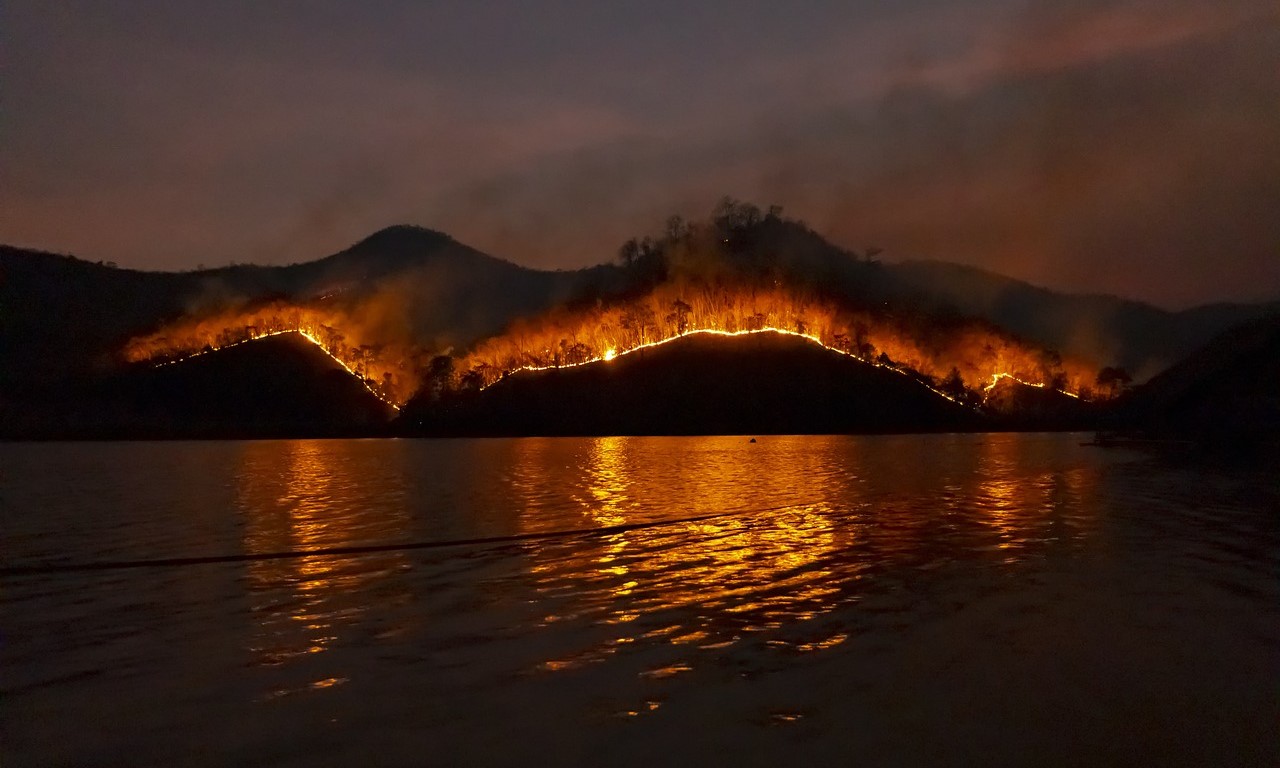Wildfires, also known as forest fires or bushfires, are uncontrolled and often destructive fires that occur in wildland areas, such as forests, grasslands, and shrublands. These fires are typically ignited by natural causes, such as lightning strikes, or human activities, including campfires, discarded cigarettes, and arson. Once ignited, wildfires can spread rapidly, fueled by dry vegetation, strong winds, and favorable weather conditions.
Wildfires play a natural role in many ecosystems, helping to maintain biodiversity, recycle nutrients, and regenerate vegetation. Some plant species have even evolved to depend on periodic wildfires for seed germination and ecosystem renewal. However, wildfires can also pose significant risks to human life, property, and the environment, especially when they occur near populated areas or during periods of drought and extreme weather.
Efforts to prevent and manage wildfires involve a combination of strategies, including prescribed burning, fuel management, firefighting techniques, and public education. Firefighters and emergency responders work tirelessly to contain and extinguish wildfires, often risking their lives to protect communities and natural resources. Additionally, land management practices, such as creating firebreaks, implementing zoning regulations, and promoting fire-adaptive landscapes, can help mitigate the impact of wildfires and reduce their severity.

Do you want to know more about wildfires? Here are 10 interesting facts about wildfires to know more about it.
- Natural Occurrence: Wildfires have been a natural phenomenon on Earth for millions of years, playing a crucial role in shaping ecosystems and maintaining biodiversity.
- Human Influence: While some wildfires are ignited by natural causes like lightning, the majority of wildfires are started by human activities, including campfires, discarded cigarettes, equipment sparks, and intentional arson.
- Fire Behavior: Wildfires can exhibit extreme behavior, including rapid spread, high temperatures, and the formation of fire whirls, also known as fire tornadoes, which can occur when intense heat creates rotating columns of air.
- Environmental Impact: Wildfires release large amounts of carbon dioxide, methane, and other greenhouse gases into the atmosphere, contributing to climate change. They also destroy habitat, degrade air quality, and can lead to soil erosion and water pollution.
- Size and Intensity: Wildfires vary greatly in size and intensity, ranging from small, low-intensity ground fires to large, high-intensity crown fires that consume entire forests. The largest wildfires can cover hundreds of thousands of acres and generate their own weather systems.
- Fire Adaptation: Some plant species have evolved adaptations to survive and even benefit from wildfires. For example, certain tree species have thick bark that insulates them from heat, while others have seeds that require exposure to fire to germinate.
- Fire Triangle: The three components necessary for a fire to ignite and spread, known as the fire triangle, include fuel, oxygen, and heat. By controlling these factors, firefighters can suppress and contain wildfires.
- Fire Weather: Weather conditions play a crucial role in wildfire behavior. High temperatures, low humidity, strong winds, and drought can create conditions conducive to rapid fire spread and extreme fire behavior.
- Smoke Impact: Wildfires produce vast amounts of smoke, which can travel long distances and affect air quality in surrounding areas, posing health risks to humans and wildlife. Smoke from wildfires can contain harmful pollutants, including particulate matter, carbon monoxide, and volatile organic compounds.
- Wildfire Management: Effective wildfire management involves a combination of prevention, suppression, and prescribed burning. Prescribed burns are controlled fires intentionally set by land managers to reduce fuel loads, maintain ecosystem health, and mitigate the risk of catastrophic wildfires. Additionally, community preparedness, public education, and firefighting resources are critical components of wildfire management efforts.
Wildfires, with their destructive potential and ecological significance, remind us of the power and complexity of nature. While they have been a natural occurrence for millennia, human influence has magnified their frequency and intensity in recent times. As we continue to grapple with the challenges posed by wildfires, from their devastating impact on communities and ecosystems to their contribution to climate change, it becomes increasingly important to prioritize proactive measures such as fire prevention, land management, and community preparedness. By fostering a deeper understanding of wildfire behavior, implementing effective management strategies, and promoting sustainable practices, we can work towards minimizing the risk and mitigating the consequences of wildfires, ensuring the safety of both people and the environment for generations to come.



